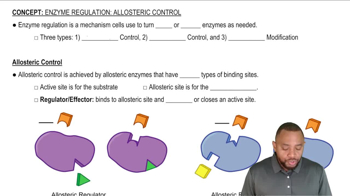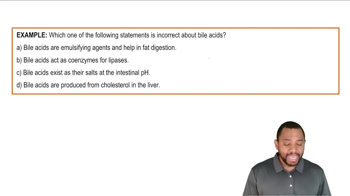Multiple Choice
Isoleucine can attach to the enzyme threonine deaminase and can decrease its activity. Isoleucine can be classified as:
 Verified step by step guidance
Verified step by step guidance Verified video answer for a similar problem:
Verified video answer for a similar problem:



 2:57m
2:57mMaster Allosteric Control Concept 1 with a bite sized video explanation from Jules
Start learning